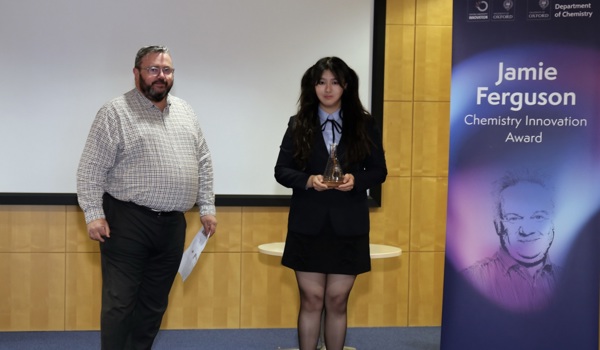Biography
Professor Clive Siviour completed an MPhys (2001) and PhD (2005) in the department of Physics, University of Cambridge, where he worked primarily on measuring the properties of materials under high strain rate deformation using the split Hopkinson bar.
Clive moved to Oxford in October 2005 to take up a Career Development Fellowship in Engineering, and was appointed to an Associate Professor position in October 2008.
Clive was made Associate Head of Department for Infrastructure in 2018; in this role he was responsible for overseeing the departments use of space, including leading projects on space refurbishments and upgrades. Since 2022 he had continued this work by overseeing the development of the department’s strategy for new buildings.
Clive became Head of Department and Professor of Materials Engineering in September 2024.
Most Recent Publications
Supporting code and information for The Split-Hopkinson Bar
Supporting code and information for The Split-Hopkinson Bar
The Split-Hopkinson Bar, Techniques, Applications and Methods
The Split-Hopkinson Bar, Techniques, Applications and Methods
Thermomechanical coupling during large strain deformation of polycarbonate: experimental study
Thermomechanical coupling during large strain deformation of polycarbonate: experimental study
Property prediction of bio‐derived block copolymer thermoplastic elastomers using graph kernel methods
Property prediction of bio‐derived block copolymer thermoplastic elastomers using graph kernel methods
Property Prediction of Bio-Derived Block Copolymer Thermoplastic Elastomers Using Graph Kernel Methods.
Property Prediction of Bio-Derived Block Copolymer Thermoplastic Elastomers Using Graph Kernel Methods.
Research Interests
Clive's research investigates the behaviour of materials and structures when subjected to impact loading. Most materials behave very differently when deformed at high speeds, and our research aims to measure this behaviour and to help understand the microscopic causes of rate dependence, with a view to better design and use of materials. We have a particular interest in the development of novel experimental techniques for different materials, and in the use of high speed photography combined with quantitative image analysis. Materials investigated include aerospace alloys (e.g. Titanium), polymers and natural materials, such as silk, this wide range is enabled by extensive collaborations with leading researchers in the fields.
In addition, Clive is a member of the editorial boards for Experimental Mechanics and Strain and has acted as guest editor for special issues of Proc. R. Soc. A. and Journal of Strain Analysis. Clive is regularly on the organising committees for the Society for Experimental Mechanics, APS Shock Compression and DYMAT conferences. In 2015 he took part (with University of Reading) in the Royal Society Summer Science Exhibition, on a stand Materials that Repair Themselves.
In 2016, Clive's contributions to Experimental Mechanics were recognised by an invitation by the Society for Experimental Mechanics to give the JSA Young Investigator plenary lecture at their annual conference.
Research Groups
Current Projects
- IMPRESS - Impact Modelling of Polymers: high-Rate Experiments for Solid-state Simulations (with University of Nottingham)
- Poly(ML): Machine Learning for Improved Sustainable Plastics (with Professor Clifton (Engineering) and Williams (Chemistry)
- iCAST: Innovation Centre for Applied Sustainable Technologies (with Oxford Chemistry and University of Bath) https://icast.org.uk/
Most Recent Publications
Supporting code and information for The Split-Hopkinson Bar
Supporting code and information for The Split-Hopkinson Bar
The Split-Hopkinson Bar, Techniques, Applications and Methods
The Split-Hopkinson Bar, Techniques, Applications and Methods
Thermomechanical coupling during large strain deformation of polycarbonate: experimental study
Thermomechanical coupling during large strain deformation of polycarbonate: experimental study
Property prediction of bio‐derived block copolymer thermoplastic elastomers using graph kernel methods
Property prediction of bio‐derived block copolymer thermoplastic elastomers using graph kernel methods
Property Prediction of Bio-Derived Block Copolymer Thermoplastic Elastomers Using Graph Kernel Methods.
Property Prediction of Bio-Derived Block Copolymer Thermoplastic Elastomers Using Graph Kernel Methods.





